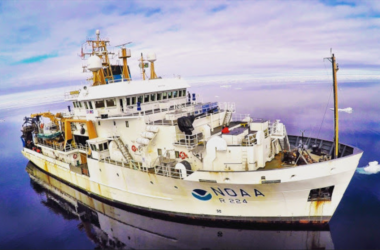Alaska’s unusually warm winters seen over the last few years may start cooling over the next ten months, giving way to La Ñina.
Meteorologist Mike Ottenweller says the El Ñino which has been causing the warm temperatures is one of the strongest on record.
Ottenweller: “We reached about a three degrees Celsius anomaly off of the equatorial Pacific waters down near Chili, and so that’s one of the strongest we’ve seen on record, it rivals the 97-98 and there was one other event, I believe it was 77-78 that was the other big one.”
Usually during Alaska’s winters, trade winds near the Equator blow from east to west, pushing warmer water to the west in the Pacific Ocean. In times of El Ñino, those winds slow, allowing that warmer water to move east towards our shores and also increasing precipitation in coastal areas.
Ottenweller says La Ñina systems typically follow El Ñino.
Ottenweller: “It’s a fairly solid likelihood that as we go through the spring and winter months we’ll start to see the El Ñino, which is the warmer than normal temperatures, start to subside and decline back to normal, and then as we get back to the fall of 2016 and even the winter of 2017, that’s when we’ll start to see the signs of a possible La Ñina.”
For Alaska, Ottenweller says La Ñina typically means a cooling trend that will mostly be noticed during next winter, sometimes paired with increased precipitation.
As for this summer, the long-term forecast for the next three months shows temperatures continuing above average.






